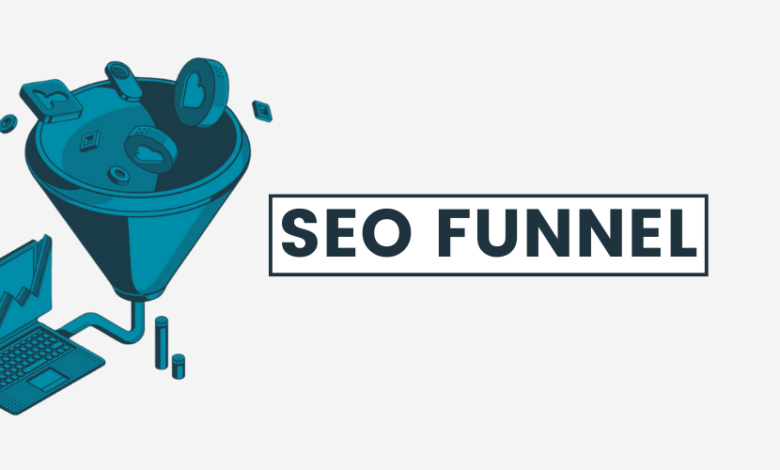Complete guide to the funnel in marketing and SEO

What is the funnel and what is it for
The term “funnels” (funnel, in Italian) refers to the process by which a company attract and convert visitors of your website into paying customers. The funnel represents the path that a user takes from meeting a brand to purchasing a product or service, passing through different stages. The goal of the funnel is guide the user along this journey, providing relevant information and resources at each stage, in order to maximize conversions and generate sales.

A funnel is made up of different stagesusually divided into three main levels:
- Top of the funnel (ToFu): In this phase, users are attracted to the website through content and marketing strategies aimed at creating awareness and interest in the brand or products offered. Typical actions in this stage include reading articles, signing up for newsletters, or watching videos.
- Middle of the funnel (MoFu): In this stage, users begin to evaluate the products or services offered and compare them with those of the competition. Typical actions include requesting information, filling out contact forms, or attending webinars.
- Bottom of the funnel (BoFu): In this final stage, users are ready to make a purchase or take an action desired by the company (such as signing up for a service). Typical actions in this stage include adding products to your cart, finalizing your purchase, or signing up for a service.

Funnel in marketing: explanations and examples
In the context of marketing, the funnel is an essential tool for plan and optimize strategies aimed at generating traffic, conversions and sales. Exist different types of funnels, depending on the specific objectives of the company and the marketing tactics used. Here are some examples of marketing funnels:
- Sales funnels: This type of funnel is focused on the sale of products or services and includes a series of actions that guide the user from the initial interest to the final purchase. A typical example of a sales funnel might include promoting a product through Google or Facebook ads, sending promotional emails, and presenting special offers or discounts to encourage purchase.
- Lead generation funnels: The lead generation funnel aims to collect contact information from users interested in the products or services offered by the company, in order to feed these potential customers with targeted content and offers. An example of a lead generation funnel could involve promoting a free e-book or webinar in exchange for the user’s email address, followed by sending informational and promotional emails to get the user to take an action, such as buying a product or requesting advice.
How to create an SEO funnel
SEO (Search Engine Optimization) is a crucial component of the success of a funnel, as it aims to improve the visibility of the website on search engines and increase organic traffic. To create an SEO optimized funnel, it is important to follow these steps:
- Keyword research: Identify keywords relevant to your industry and your products or services, in order to create content optimized for these keywords at different stages of the funnel. Use tools like Google Keyword Planner or SEOZoom to find the most relevant keywords with good search volume.
- Creation of quality content: Produce high-quality and useful content that answer users’ questions and needs at every stage of the funnel. For example, create feature articles and guides for ToFu, case studies and comparisons for MoFu, and customer testimonials or reviews for BoFu. Remember to optimize this content for the keywords identified in the search.
- Site structure and navigation: Organize your website in a logical and intuitive way, making it easier for users to navigate along the funnel path. Use a hierarchical structure with clear categories and sub-categories and create specific landing pages for the different stages of the funnel.
- On page optimization: Make sure that every page of your website is SEO optimized, with captivating and relevant titles and meta descriptions, Semantic and well-structured URLs, and adequate formatting of the contents (use of titles, subtitles, bulleted lists, etc.). It also optimizes images using alt attributes and reducing file size to improve page loading speed.
- Link building: Work on building a quality backlink profile by getting links from reputable sites that are relevant to your industry. This will help improve your domain authority and position in search results.
- Analysis and continuous improvement: Constantly monitor the performance of your funnel through tools like Google Analytics, paying attention to key metrics like conversion rate, time spent on site and bounce rate. Identify any issues or areas for improvement and make adjustments as needed to further optimize your funnel and improve results.
Bottom line, creating a well-structured and SEO-optimized funnel is critical to the success of any digital marketing strategy. By following the steps outlined in this article, you will be able to attract a higher number of visitors on your website, guide them along the conversion path and ultimately turn them into loyal and satisfied customers. Pay attention to the details, constantly monitor the performance of your funnel and don’t hesitate to test and adjust your strategies to get the best possible results.
#Complete #guide #funnel #marketing #SEO




